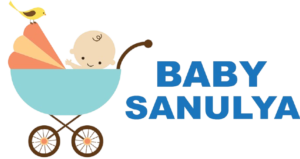Raising a child is an exhilarating journey filled with unique milestones and moments of joy. Understanding these developmental milestones can provide reassurance and guidance for new parents as their little ones grow and flourish. This detailed guide on baby milestones will help you know what to expect from birth up to the age of five years, including physical, cognitive, emotional, and social development stages.

Child development is universal, but cultural practices can influence the pace at which a child reaches certain milestones. In India, where family and cultural norms can differ markedly from the West, these milestones can provide a framework that reflects universal development patterns and cultural nuances. Each milestone significantly indicates a child’s growth, whether rolling over, walking, or uttering their first words.
Birth to 3 Months
Physical Development:
Reflexes: Newborns display reflexes such as rooting, sucking, and grasping.
Motor Skills: Gradual control over movements begins with lifting the head briefly when on the tummy.
Cognitive Development:
Awareness: Babies start to gaze at faces and respond to light and sound.
Social and Emotional Development:
Bonding: Early bonding is facilitated through eye contact, especially with parents and close family members.
Comfort: Crying is the main form of communication, indicating the need for comfort, hunger, or a diaper change.
4 to 6 Months
Physical Development:
Gross Motor Skills: Babies begin rolling over, sometimes from the stomach to back, by four months and back to the stomach by six months.
Fine Motor Skills: They start reaching for and grasping objects.
Cognitive Development:
Curiosity and Exploration: Increased interest in surroundings, with improved vision allowing babies to track moving objects.
Social and Emotional Development:
Social Smiling: Smiles become more social and are directed at people. Babies start to enjoy playing with others.
Food Chart:
6 month old baby food chart
blw
7 to 9 Months
Physical Development:
Mobility: Many babies begin to crawl, and some may pull themselves up to stand.
Skill: Improved hand-eye coordination allows them to transfer objects from one hand to another.
Cognitive Development:
Understanding: They begin to understand familiar words like ‘no’ and their name.
Problem Solving: Interest in solving simple problems like retrieving a hidden toy.
Social and Emotional Development:
Fear of Strangers: Babies may begin to show anxiety around strangers or when separated from their parents.
Food Chart:
7 months Baby food recipes
8 months Baby food recipes
9 months Baby food recipes
10 to 12 Months
Physical Development:
First Steps: Many babies start to walk holding onto furniture, and some might take their first independent steps.
Fine Motor Skills: Improved precision in grasping, capable of using the pincer grasp to pick up small objects.
Cognitive Development:
Imitation: Begins to imitate actions and sounds—understanding of functional relationships, such as pushing buttons on toys to activate them.
Social and Emotional Development:
Independence: Increased desire to explore independently but often checks back for parental support.
Food Chart:
10 months Baby food recipes
11 months Baby food recipes
13 to 18 Months
Physical Development:
Walking: Most children are walking well by 18 months.
Motor Skills: Can drink from a cup and may start using spoons.
Cognitive Development:
Language: There has been a rapid expansion in understanding and using words. By 15 months, they might say one to ten words and combine two words by 18 months.
Exploration: Engages in more complex play, like stacking blocks.
Social and Emotional Development:
Imitation: Continued imitation of adult behaviours in play.
Emotional Expressiveness: Shows a range of emotions such as happiness, anger, affection, and fear.
Food Chart: 12-18 month baby food recipes
19 to 24 Months
Physical Development:
Refined Movements: Improved balance and agility. Children begin to run, kick balls, and climb furniture with ease.
Self-help Skills: Shows interest in self-help skills like undressing.
Cognitive Development:
Speech Development: Significant increase in vocabulary and begins to form short sentences.
Memory: Better memory skills lead to recognizing familiar people, objects, and routines.
Social and Emotional Development:
Independence: Increased assertiveness and expressions of desires and dislikes.
Food Chart:12-18 month baby food recipes
2 to 3 Years
Physical Development:
Motor Skills: Hopping, jumping, and more confident running are typical. Fine motor skills allow more detailed activities like turning pages in a book.
Toilet Training: Many children show readiness for toilet training and can express toileting needs.
Cognitive Development:
Language: By three years, vocabulary bursts to about 200 words Or more, and kids start asking lots of questions.
Cognitive Abilities: Better understanding of time concepts like ‘today’ and ‘tomorrow.’
Social and Emotional Development:
Social Play: Play becomes more cooperative. Children start playing more interactively with other children.
Emotions: More aware of their own and others’ feelings. They begin to show empathy.
Food Chart: 2-3 Years old food chart
3 to 5 Years
Physical Development:
Refinement of Skills: Fine and gross motor skills become more refined. Kids can dress themselves, use tools like scissors, and engage in sports.
Physical Growth: Growth may slow down compared to the first three years.
Cognitive Development:
Cognitive and Language Skills: Increased ability to follow complex instructions. Storytelling and imaginary play are every day.
Learning: Ready to start more formal education, which includes basic math and reading skills.
Social and Emotional Development:
Emotional Regulation: Better control over emotions. They understand social cues and rules.
Relationships: Develop friendships and show preferences for playmates.
Food Chart: Toddler food recipes
Understanding these milestones provides parents with the tools to support their children’s growth and to seek help if developmental delays occur. Remember, each child is unique and may reach these milestones at their own pace. Consulting with paediatricians and attending regular health check-ups can ensure that any concerns are addressed promptly, allowing your child to thrive in a nurturing and stimulating environment.
Raising a child adds joy and challenge to the journey of parenthood. Parents can contribute positively to their child’s development by monitoring these milestones, ensuring they grow up healthy, happy, and ready to take on the world.

